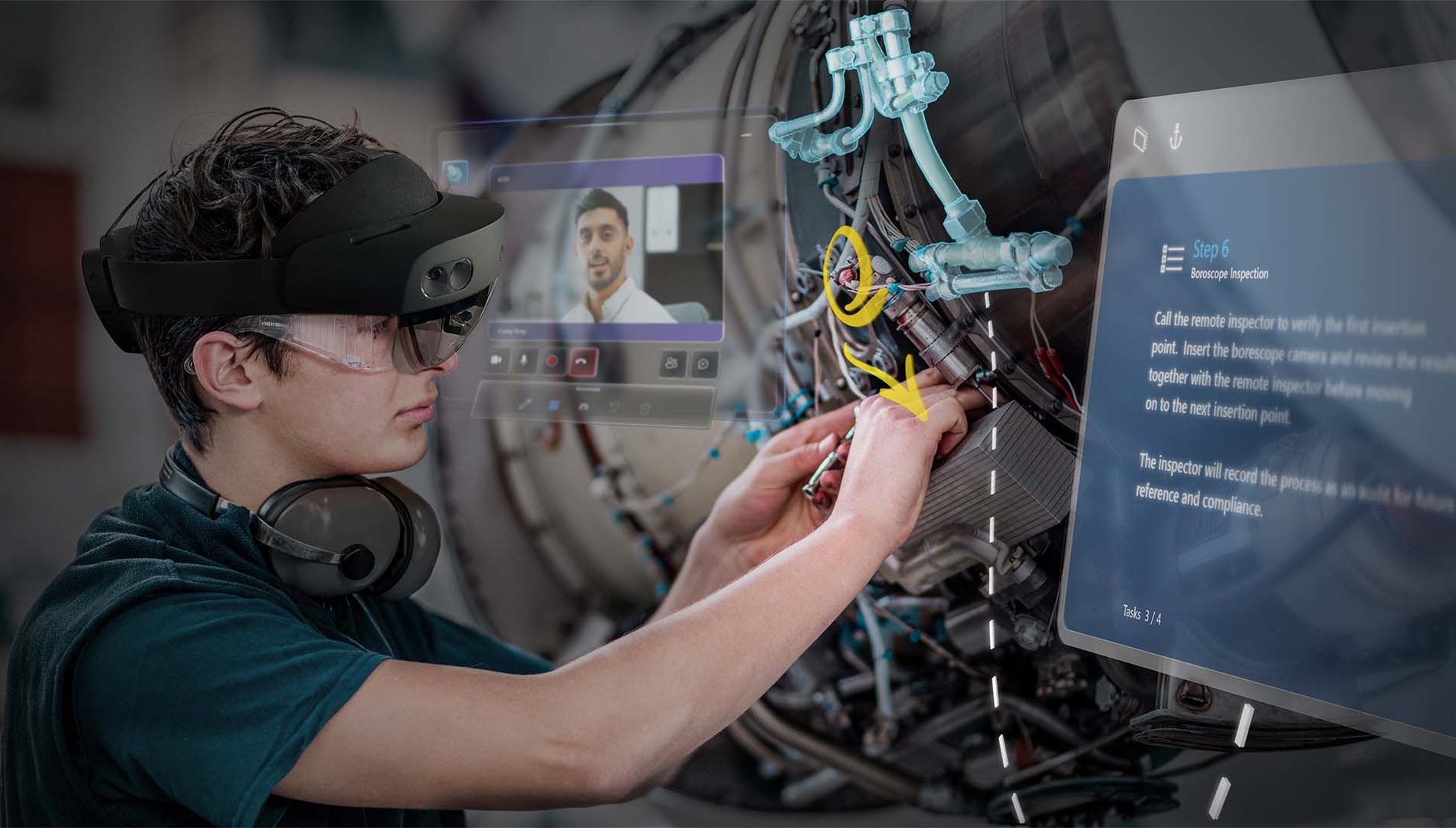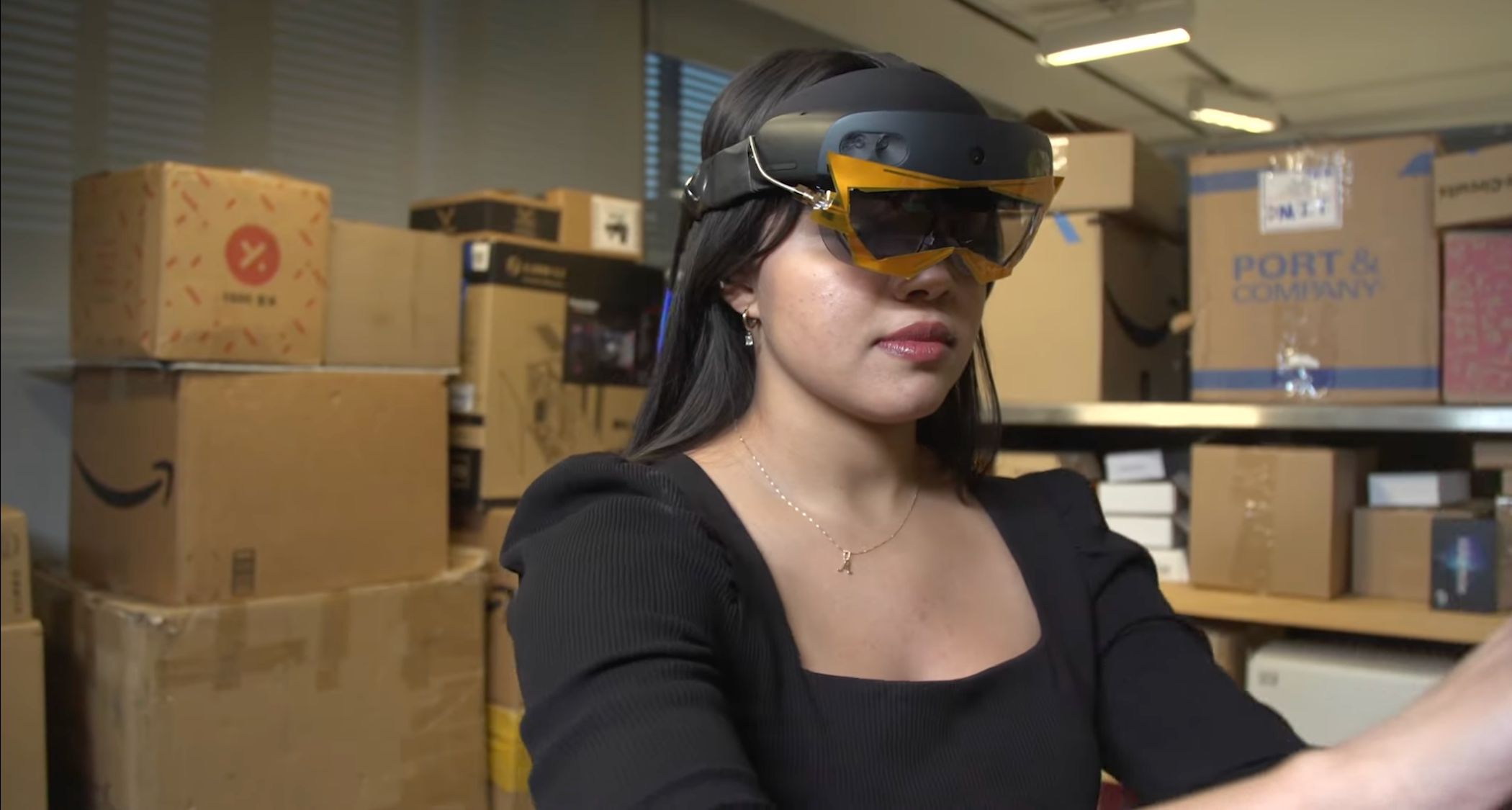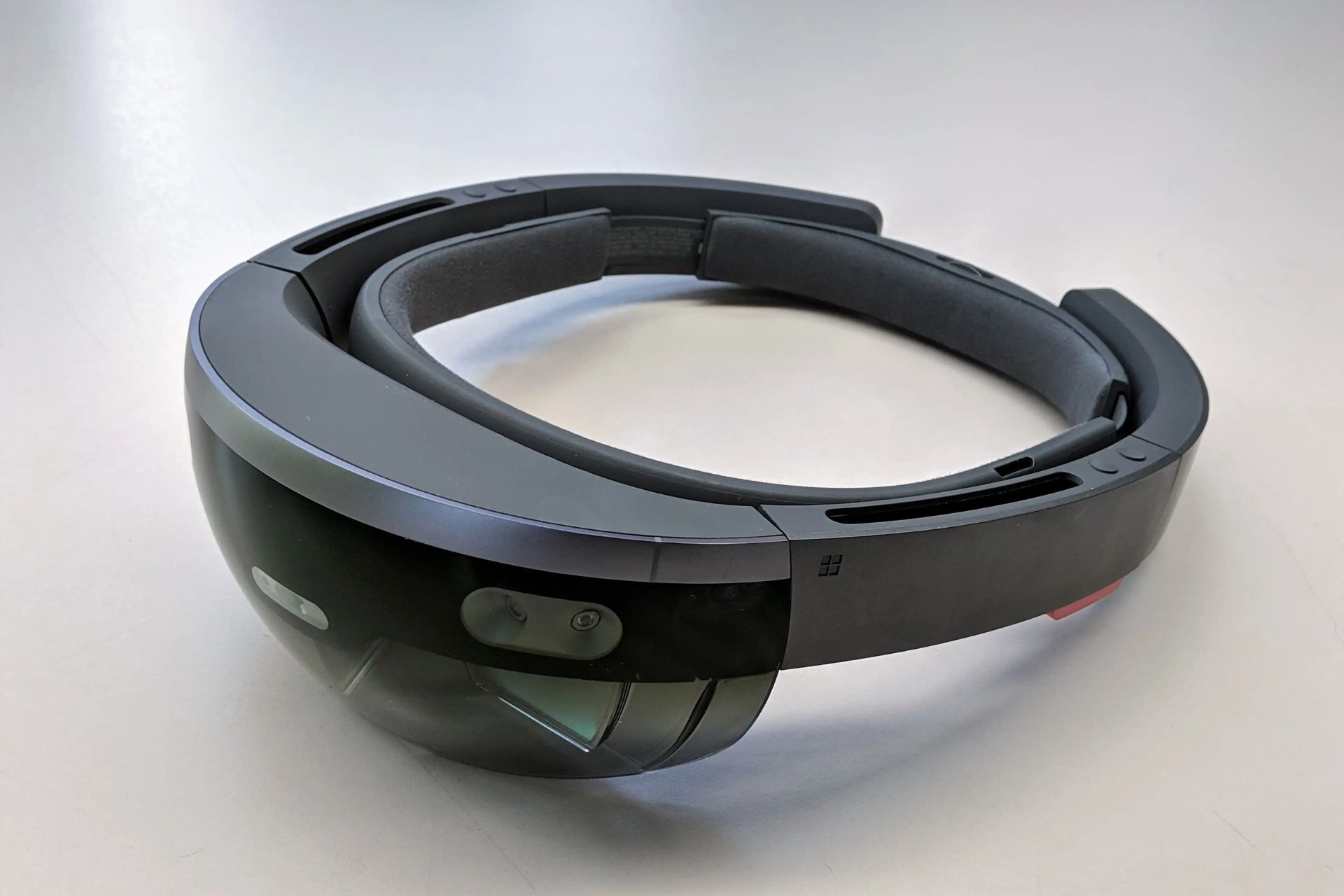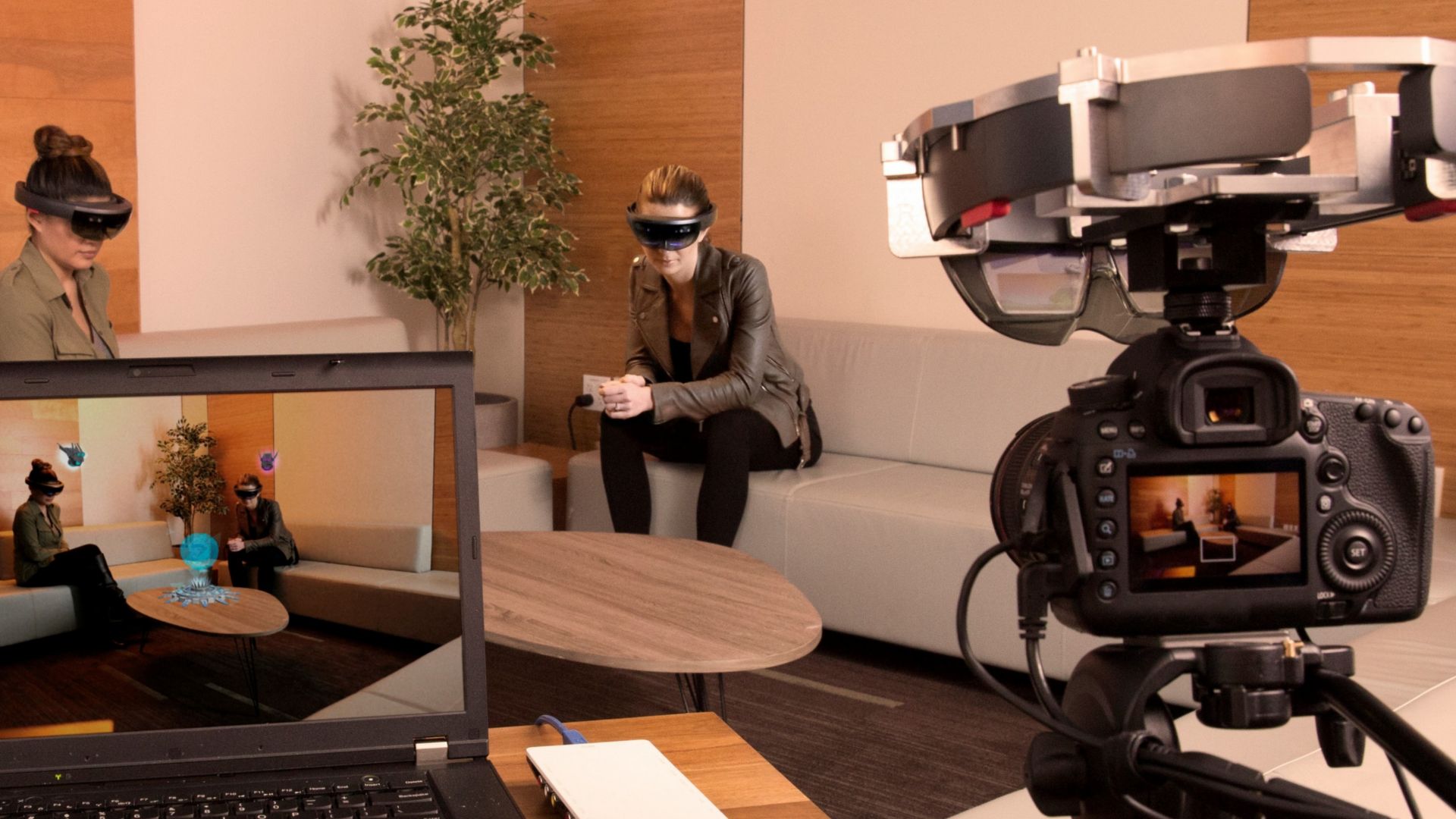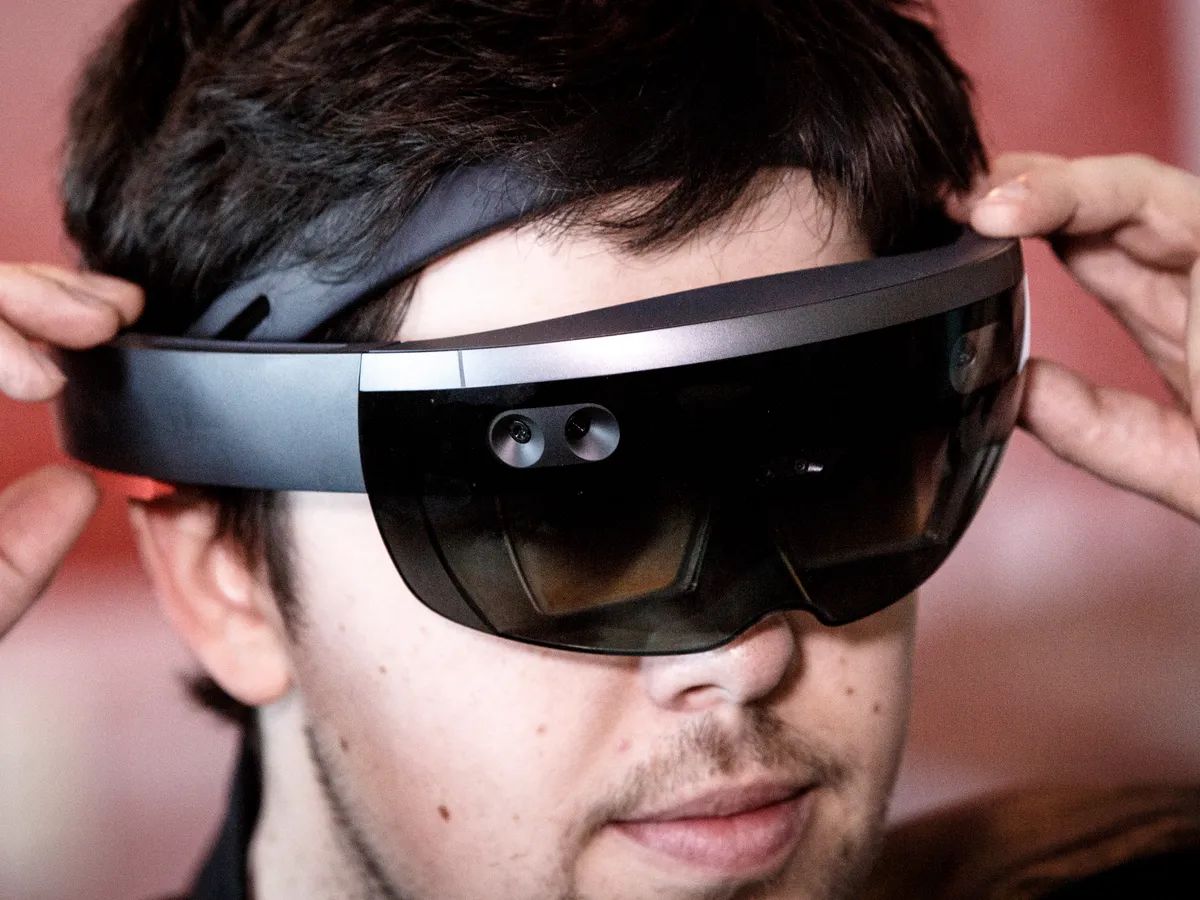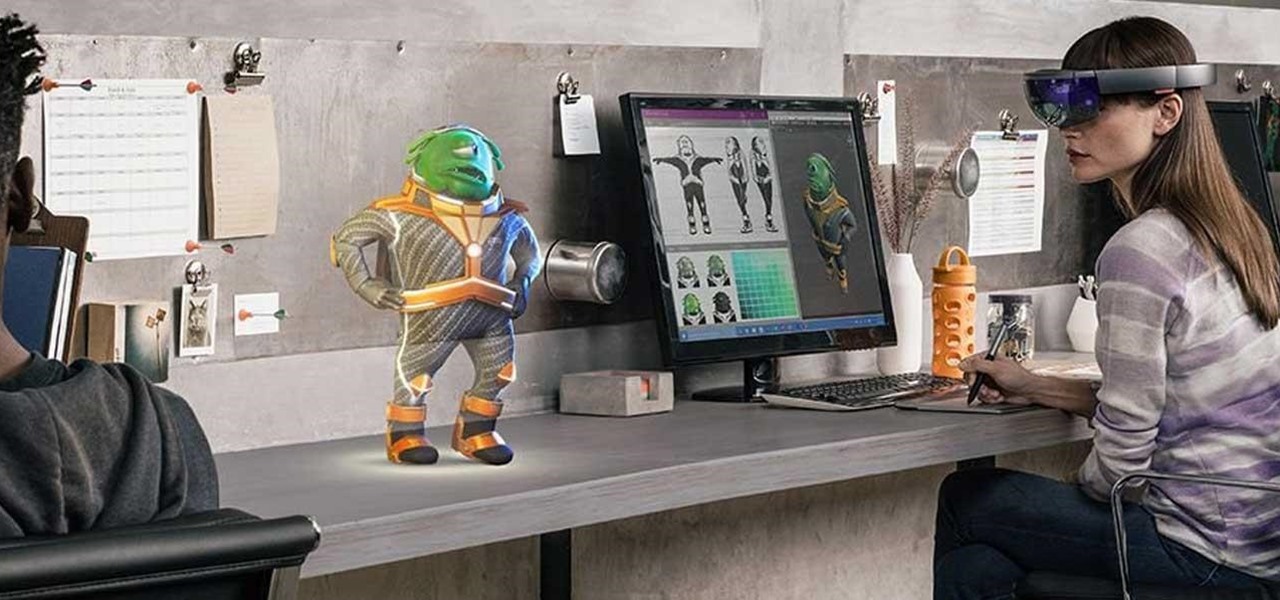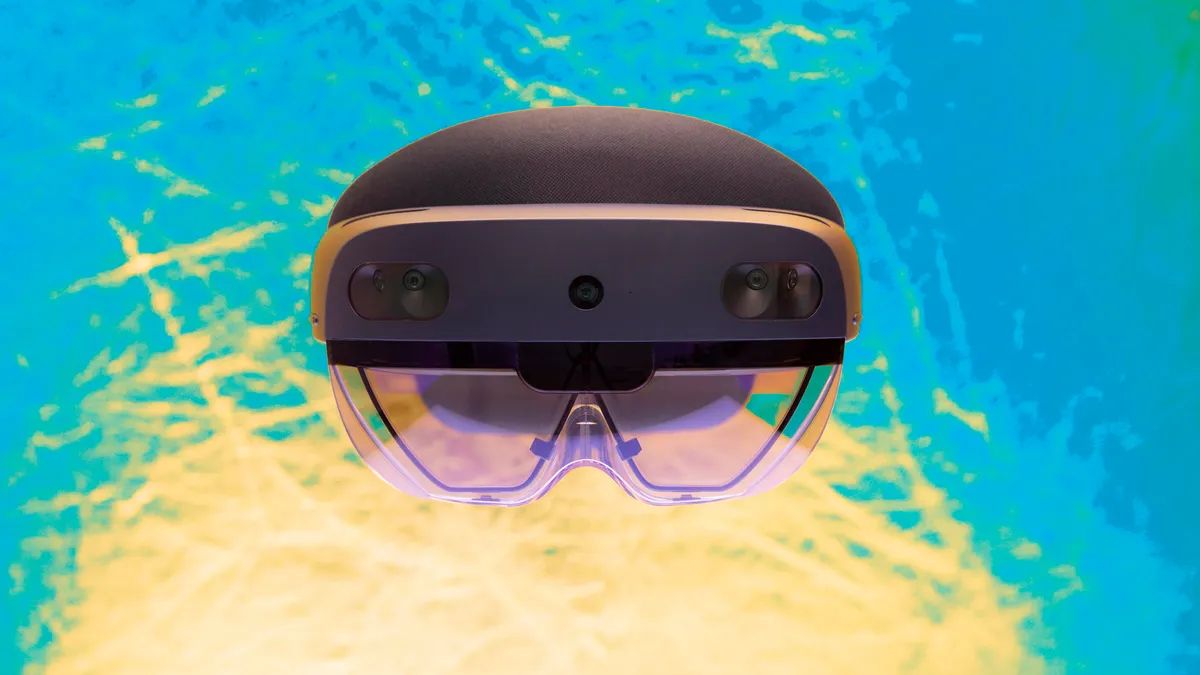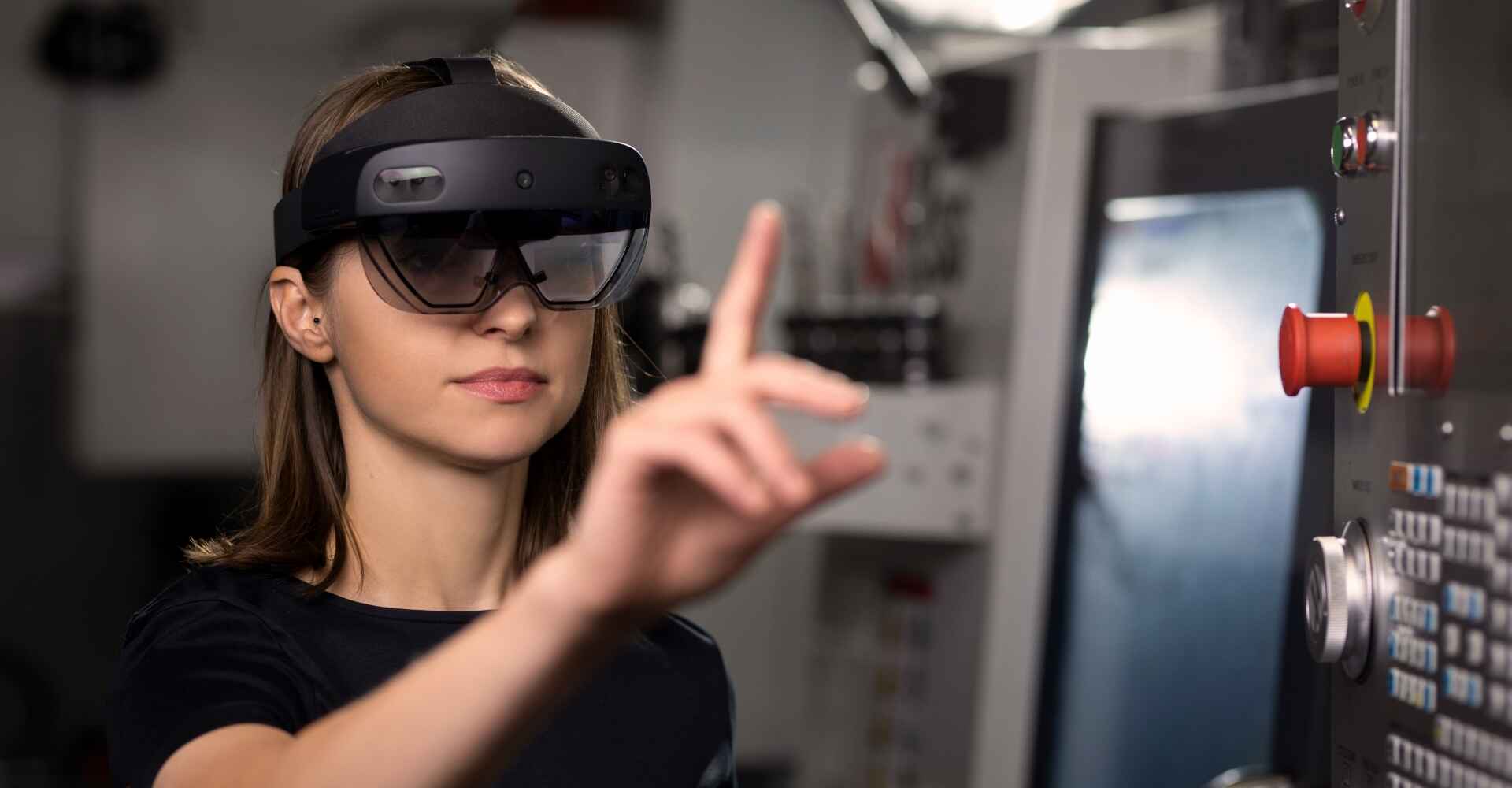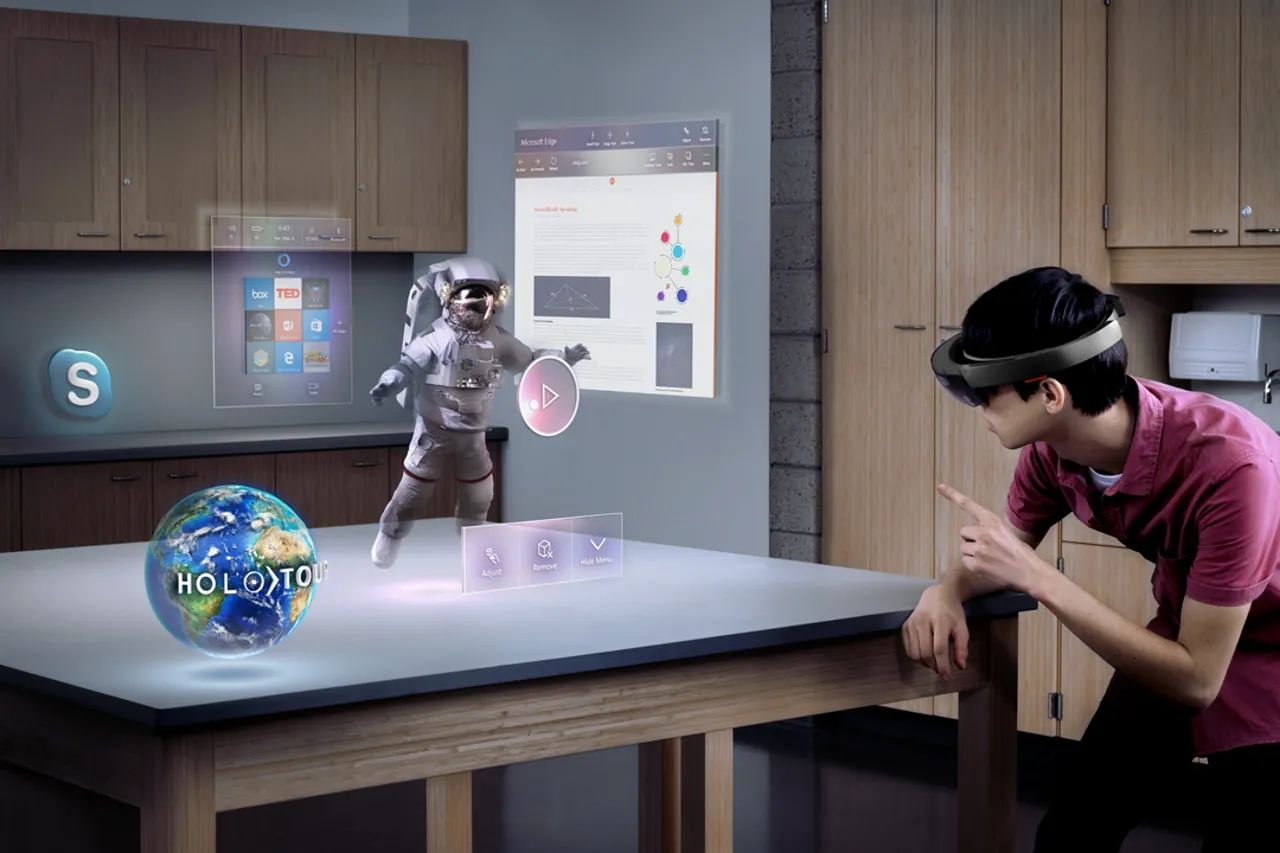Introduction
AR (Augmented Reality) has revolutionized our world, bringing virtual elements into our physical reality and transforming the way we interact with digital information. With the advent of AR devices like HoloLens, the possibilities have expanded exponentially. HoloLens is a cutting-edge mixed reality device developed by Microsoft, offering a unique and immersive experience that blends the real and virtual worlds seamlessly. In this article, we will explore the diverse capabilities of HoloLens and how it has made a significant impact on various industries.
The HoloLens brings AR to a whole new level with its advanced optical sensors, spatial sound, and holographic displays. With its untethered design and built-in processing power, users can experience a wide array of applications that enhance productivity, entertainment, and accessibility.
Whether you are a gamer, designer, engineer, educator, or medical professional, the HoloLens has something to offer. From augmented reality experiences to remote collaboration, the HoloLens is transforming how we work, play, and learn. Let’s dive into the exciting capabilities of this remarkable device and discover how it is reshaping the future.
Augmented Reality Experience
HoloLens provides users with a truly immersive augmented reality experience. It allows digital content to be overlaid onto the real world, enabling users to interact with virtual objects and information in their physical environment.
Imagine being able to see holograms appear right before your eyes, seamlessly integrated into your surroundings. With HoloLens, you can navigate through a vast array of apps and experiences, from browsing the web and checking emails in mid-air to placing virtual furniture in your living room to see how it fits before making a purchase.
One of the key features that sets HoloLens apart is its ability to create anchor points. These anchor points allow virtual objects to stay in place even as you move around, providing a high level of spatial mapping. This means you can leave a virtual note on your refrigerator or mark a specific location in your workspace for a task reminder, and it will still be there when you return.
HoloLens also embraces gesture-based interactions, allowing users to interact with holograms using hand gestures, such as tapping, pinching, and dragging. This hands-free control enhances the user’s sense of immersion and makes interactions with virtual content feel more intuitive and natural.
Additionally, HoloLens incorporates spatial sound technology, enabling users to hear audio cues from specific virtual objects as if they are coming from the physical world. This spatial audio further enhances the overall augmented reality experience and creates a more realistic and engaging environment.
From gaming and entertainment to productivity and creativity, HoloLens delivers an unparalleled augmented reality experience that takes user interaction to a whole new level.
Mixed Reality Gaming
HoloLens has taken gaming to the next level by introducing mixed reality experiences that combine the virtual and physical worlds. With its advanced sensors and holographic displays, HoloLens offers gamers an immersive and interactive gameplay experience unrivaled by traditional gaming platforms.
Imagine battling fierce virtual creatures in your living room or defending your turf against enemy forces invading your backyard. HoloLens transforms your surroundings into a gaming arena, allowing you to engage with virtual elements in a whole new way.
The device’s spatial mapping capabilities enable the integration of virtual characters, objects, and environments seamlessly into your real-world surroundings. This creates a truly immersive gaming experience where you can physically move around and interact with the virtual world.
With HoloLens, multiplayer gaming takes on a whole new meaning. You can team up with friends in the same physical space or connect with other players remotely. Imagine racing against holographic opponents or strategizing with teammates as if they were right there with you.
Moreover, HoloLens introduces a new level of creativity to gaming by empowering players to build their own virtual worlds. With tools like Microsoft’s Mixed Reality Toolkit, users can create their unique gaming experiences from scratch or modify existing games to fit their preferences. This opens up endless possibilities for innovation and collaboration within the gaming community.
From action-packed adventures to puzzle-solving challenges, mixed reality gaming on HoloLens offers a whole new dimension of excitement and immersion. Get ready to step into a world where fiction becomes reality, and every gaming experience is brought to life like never before.
3D Modeling and Design
HoloLens has revolutionized the field of 3D modeling and design by providing a unique mixed reality interface that allows designers and creators to visualize and manipulate virtual objects in a real-life setting.
With HoloLens, architects, industrial designers, and engineers can bring their designs to life in a way that was previously unimaginable. The device’s spatial mapping capabilities allow virtual models to be placed within the physical environment, enabling designers to analyze scale, proportions, and spatial relationships in real time.
Using HoloLens, designers can walk around and explore their creations from different angles, providing a true sense of immersion and enabling them to spot design flaws or make improvements on the spot. The ability to interact with virtual objects using gestures and voice commands further enhances the design process, making it more intuitive and dynamic.
Collaboration among designers and stakeholders is also greatly enhanced with HoloLens. Multiple users can view and interact with the same virtual design simultaneously, regardless of their physical location. This allows for effective communication and real-time collaboration, saving time and improving the overall design quality.
HoloLens is also being used in the entertainment industry for pre-visualization and virtual set design. Directors and production designers can create virtual sets and visualize how actors and props will interact with their surroundings before any physical construction takes place. This not only saves time and resources but also opens up new possibilities for creative storytelling.
Furthermore, HoloLens is empowering artists and creatives to unleash their imagination in the realm of 3D art. By using applications like Microsoft’s Paint 3D, artists can sculpt and paint virtual objects in a 3D space, blurring the lines between traditional art forms and digital expressions.
HoloLens has transformed the way 3D modeling and design are approached, providing an immersive, interactive, and collaborative environment that opens up new possibilities for creativity and innovation.
Remote Collaboration
HoloLens offers a game-changing solution for remote collaboration, allowing individuals from across the globe to work together in a shared augmented reality environment. With its advanced communication and spatial mapping capabilities, HoloLens brings colleagues and teams closer together, regardless of their physical location.
Through the use of HoloLens, users can collaborate on projects, share ideas, and visualize concepts as if they were in the same room. The device creates a virtual workspace where participants can see each other as avatars and interact with virtual objects and data in real time.
By utilizing the HoloLens’s hand gestures and voice commands, users can perform tasks such as drawing diagrams, annotating objects, or manipulating 3D models together. This enables more effective communication and fosters a sense of presence, making remote collaboration feel as natural and seamless as being physically present.
Beyond just visual collaboration, HoloLens also incorporates spatial sound, allowing users to hear the voices and sounds of their colleagues as if they were positioned in the same physical space. This enhances the immersion and creates a more engaging collaborative experience.
Remote collaboration with HoloLens is not limited to specific industries. It can be applied to various fields, from architecture and engineering to healthcare and education. Designers can collaborate on architectural projects, doctors can consult with their colleagues in remote locations, and educators can conduct virtual classrooms with students from different parts of the world.
One notable example of the power of remote collaboration with HoloLens is the ability for surgeons to receive expert guidance during complex procedures, even if the expert is located in a different city or country. By wearing HoloLens, the surgeon can share a live feed of the procedure with the expert, who can provide real-time guidance and support, improving patient outcomes and expanding access to specialized medical knowledge.
HoloLens has revolutionized remote collaboration by bridging the gap between physical distance and effective communication. It unlocks new opportunities for teams to collaborate, innovate, and solve problems together, regardless of their geographic location.
Education and Training
HoloLens has emerged as a game-changer in the field of education and training, offering immersive and interactive experiences that enhance learning and skill development. By blending the virtual and physical worlds, HoloLens brings abstract concepts to life and provides hands-on training in a wide range of disciplines.
In the classroom, HoloLens transforms traditional education by delivering engaging and interactive lessons. Students can visualize complex 3D models, explore historical events through virtual reenactments, and even interact with holographic characters. This hands-on approach to learning fosters deeper understanding and retention of knowledge.
Furthermore, HoloLens allows educators to create personalized learning experiences tailored to individual student needs. With the ability to design interactive content and set up virtual simulations, educators can provide customized learning paths and ensure that students receive the support they require.
In the field of medical training, HoloLens has proven to be a valuable tool. Medical students can use HoloLens to study human anatomy in a realistic and interactive manner, visualizing organs and systems in 3D, and even practice surgical procedures through immersive simulations. This hands-on training prepares aspiring medical professionals for real-world scenarios and enhances patient care.
HoloLens also has applications in technical skills training and maintenance. From aircraft maintenance to equipment repair, HoloLens can provide step-by-step instructions overlaid onto physical objects, ensuring trainees have a comprehensive understanding of the task at hand. The device can guide trainees through complex procedures, reducing human error and improving efficiency.
Another area where HoloLens is making a significant impact is in vocational training. By simulating real-world work environments and providing interactive training modules, HoloLens is bridging the gap between classroom learning and practical skills development. Trainees can gain hands-on experience in fields such as construction, manufacturing, and automotive repair, boosting their employability and confidence.
With its wide-ranging educational and training applications, HoloLens is revolutionizing the learning experience. It empowers educators, enhances student engagement, and prepares individuals for real-world challenges in a highly immersive and interactive way.
Medical Training and Visualization
HoloLens has revolutionized medical training and visualization, offering healthcare professionals and students an innovative and immersive platform to enhance their knowledge and skills. By leveraging the power of mixed reality, HoloLens enables medical practitioners to visualize complex anatomical structures, practice surgical procedures, and collaborate with experts in real time.
One of the key applications of HoloLens in the medical field is in anatomy education. Medical students traditionally rely on textbooks and 2D images to learn about the human body. However, with HoloLens, they can now view and interact with detailed 3D models of organs, bones, and systems. This immersive experience provides a deeper understanding of anatomical structures and their spatial relationships, enabling students to grasp complex concepts with greater ease.
HoloLens also offers realistic and interactive surgical training simulations. Surgeons-in-training can practice procedures in a virtual setting, gaining hands-on experience without the associated risks. With the ability to manipulate virtual instruments and receive real-time guidance from experts, HoloLens accelerates skill development and improves surgical outcomes.
Additionally, HoloLens is becoming essential in telemedicine and remote consultations. Healthcare professionals can use the device to share live feeds of patient examinations, allowing remote experts to provide guidance and make diagnoses in real time. This capability enhances access to specialized medical knowledge, particularly in underserved areas or during emergencies.
For medical professionals in the operating room, HoloLens serves as a valuable tool for augmented visualization. Surgeons can view patient data, diagnostic images, and real-time vital signs overlaid directly onto their field of view, improving situational awareness and decision-making during complex procedures. This augmented visualization assists in precise surgical navigation, reducing the risk of errors and complications.
HoloLens is also being utilized for patient education and communication. Physicians can use holographic models and animations to explain complex medical conditions or treatment procedures to patients, making healthcare information more accessible and understandable. This empowers patients to actively participate in their own care and promotes better communication between patients and healthcare providers.
In summary, HoloLens is transforming medical training and visualization by providing immersive 3D experiences, realistic simulations, and real-time collaboration. It is revolutionizing how medical professionals learn, practice, and deliver care, ultimately leading to improved patient outcomes and advancements in healthcare.
Manufacturing and Architecture
HoloLens is revolutionizing the fields of manufacturing and architecture by introducing a new way to design, visualize, and collaborate on projects. With its mixed reality capabilities, HoloLens enables professionals in these industries to streamline workflows, improve efficiencies, and bring ideas to life in a highly interactive and immersive manner.
In manufacturing, HoloLens offers numerous benefits. It allows engineers and designers to view and manipulate 3D models of products in a real-world context, providing valuable insights into form, fit, and function. By overlaying digital information onto physical objects, HoloLens enhances the ability to detect design flaws, optimize manufacturing processes, and make informed decisions without the need for expensive physical prototypes.
With the spatial mapping capabilities of HoloLens, architects and builders can visualize designs and evaluate how structures will fit into existing environments. They can walk through virtual representations of buildings, exploring spatial relationships and making adjustments in real time. This immersive experience enables architects to communicate design concepts more effectively with clients, leading to better collaboration and a clearer understanding of the end result.
HoloLens also aids in remote collaboration in the manufacturing and architecture fields. Multiple stakeholders can join virtual meetings, share their perspectives, and provide feedback on designs, regardless of their physical locations. This eliminates the need for travel and facilitates real-time decision-making, leading to increased productivity and reduced project timelines.
Another valuable feature of HoloLens is its ability to superimpose 3D models onto real-world environments. In manufacturing, this enables workers to visualize equipment and machinery placements, follow step-by-step instructions for assembly or maintenance, and identify potential safety risks. In architecture, HoloLens allows contractors to precisely locate and install components or systems according to the design specifications, reducing errors and ensuring accurate implementation.
HoloLens can also be used for training and skills development in manufacturing and architecture. New employees can be immersed in virtual environments, simulating complex tasks or procedures, enhancing their understanding and reducing the learning curve. This approach to training minimizes the risk of errors and ensures that workers are well-prepared before starting their roles.
Overall, HoloLens is transforming the manufacturing and architecture industries by providing a seamless integration of digital and physical realms. It enhances the design process, enables efficient collaboration, improves visualization, and facilitates effective training, ultimately leading to better outcomes and increased productivity.
Entertainment and Events
HoloLens has opened up endless possibilities in the realm of entertainment and events, delivering immersive and interactive experiences that captivate audiences and create unforgettable moments. Whether it’s enhancing live performances, creating virtual worlds, or providing unique interactive experiences, HoloLens is transforming the way we engage with entertainment.
One of the exciting applications of HoloLens in entertainment is its ability to augment live performances. Imagine attending a concert where virtual characters or holographic effects are seamlessly integrated into the performance, enhancing the visual spectacle. HoloLens enables performers to merge the physical and virtual worlds, captivating audiences with stunning visuals and interactive elements.
Furthermore, with HoloLens, viewers can have a front-row experience of sports events or live broadcasts from the comfort of their homes. By overlaying real-time statistics, player profiles, and replays directly onto the viewing experience, HoloLens enhances the excitement and engagement of sports fans. Additionally, virtual reality experiences can be created with HoloLens, allowing users to immerse themselves in completely digital environments and interact with virtual elements.
HoloLens also has the potential to revolutionize the way we experience museums, theme parks, and exhibitions. By providing interactive holographic displays, visitors can engage with content in unique and immersive ways. For example, HoloLens can bring historical characters to life, taking visitors on virtual tours with interactive storytelling. It can also enhance educational experiences by providing visual and interactive explanations of exhibits.
Moreover, HoloLens offers event organizers the ability to create interactive and engaging experiences for attendees. From trade shows and conferences to product launches and art exhibits, HoloLens enables the seamless integration of virtual content and interactive elements. Attendees can interact with holograms, explore virtual showcases, and engage with digital information in real time.
HoloLens also has the potential to revolutionize gaming and entertainment at home. With HoloLens, gamers can merge their physical surroundings with virtual gaming worlds, transforming their living rooms into immersive and interactive gaming environments. This creates an entirely new level of immersive experiences and opens up possibilities for entirely new genres of gaming.
In summary, HoloLens is reshaping the entertainment and events industry by providing interactive and immersive experiences that captivate audiences. From live performances to sports events, exhibitions to gaming at home, HoloLens unlocks a world of possibilities, creating unforgettable moments and pushing the boundaries of entertainment.
Accessibility Features
HoloLens is not just a device for entertainment and productivity; it also introduces a range of accessibility features that enhance the user experience for individuals with disabilities. These features have the potential to empower people who may face physical or cognitive challenges, providing them with new opportunities to engage with technology and the digital world.
One of the accessibility features of HoloLens is its support for gesture-based interactions. This allows individuals with limited mobility or dexterity to navigate through applications and interact with holographic content using simple hand gestures. The ability to control the device without the need for physical devices or buttons makes it more accessible and inclusive for individuals with motor impairments.
Another crucial accessibility feature in HoloLens is its support for voice commands. Users can communicate with the device using natural language, empowering individuals with mobility impairments, visual impairments, or other physical disabilities to control the device and access information without the need for manual interaction.
HoloLens also embraces the concept of universal design by offering customizable user interfaces. Users have the flexibility to adjust the size, placement, and appearance of holographic content based on their specific needs and preferences. This feature benefits individuals with visual impairments or cognitive disabilities, allowing them to personalize their experience and optimize content visibility.
Furthermore, HoloLens can use captioning and directional audio cues to assist individuals with hearing impairments. The device can overlay captions onto holographic content, making information more accessible for those who rely on text-based communication. Directional audio cues enable individuals with hearing impairments to perceive audio cues from specific virtual objects, providing a more inclusive and immersive experience.
HoloLens also has potential applications in the field of rehabilitation. The device can be used for cognitive training, helping individuals with cognitive impairments improve their memory, attention, and problem-solving skills through interactive and engaging activities. The immersive nature of HoloLens creates an environment that can promote engagement and skill development during rehabilitation processes.
By incorporating these accessibility features, HoloLens is making strides toward creating an inclusive and accessible technology platform. It empowers individuals with disabilities to fully engage and participate in the digital world, breaking down barriers and unlocking new opportunities for communication, productivity, and personal growth.
Conclusion
HoloLens has emerged as a groundbreaking device that transcends the boundaries of our physical world, introducing a realm of augmented and mixed reality experiences. It has revolutionized industries such as gaming, education, healthcare, manufacturing, architecture, and entertainment, offering immersive and interactive capabilities that were once unimaginable.
With its advanced spatial mapping, gesture-based interactions, and holographic displays, HoloLens has transformed the way we learn, work, and play. It has provided students with a new level of engagement and understanding, professionals with enhanced collaboration and visualization tools, and entertainment enthusiasts with captivating and immersive experiences.
In fields such as healthcare and architecture, HoloLens has reshaped training methods, allowing practitioners to practice in virtual environments and delivering more accurate surgical procedures and architectural designs. Remote collaboration has been revolutionized, enabling individuals to work together, regardless of their physical location.
Furthermore, HoloLens has opened up possibilities for individuals with disabilities, introducing accessibility features that empower them to engage with technology and the digital world in ways they may not have previously been able to.
As HoloLens continues to evolve and more developers explore its potential, the applications and opportunities for this groundbreaking device are limitless. From creating virtual worlds to revolutionizing design processes, HoloLens has become an indispensable tool in various industries.
Although HoloLens has already made significant advancements, we can expect even more innovation and exciting developments in the future. As technology continues to progress, HoloLens will continue to push the boundaries of what’s possible, opening up new frontiers for human interaction, creativity, and productivity.
In conclusion, HoloLens is transforming the way we perceive and interact with the digital world. With its ability to seamlessly blend virtual and physical elements, it has transcended traditional boundaries and opened up endless possibilities across industries and disciplines. HoloLens has reignited our imaginations and inspired a new era of innovation and exploration.







